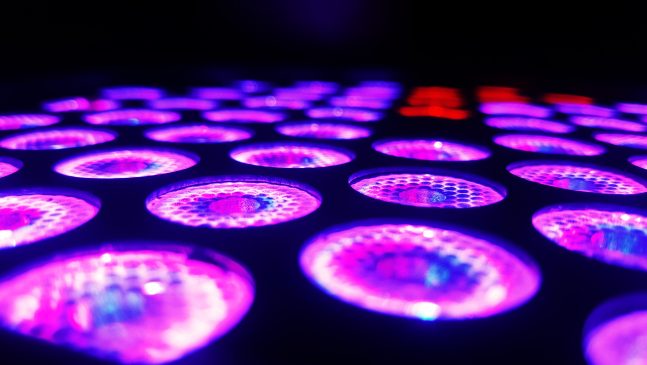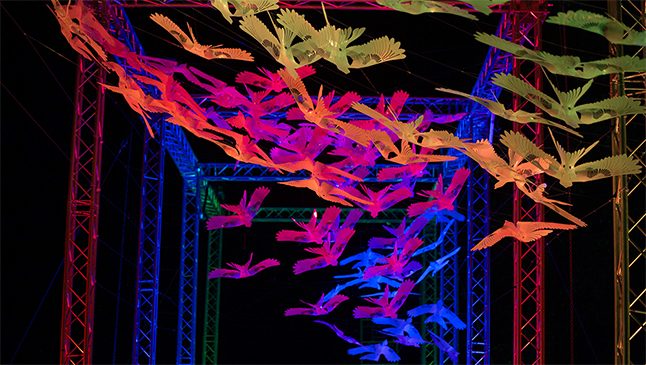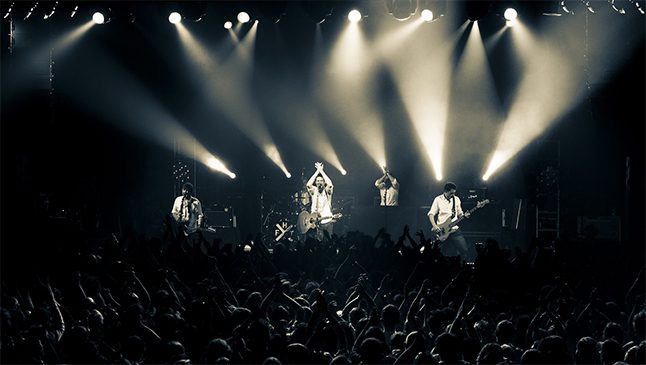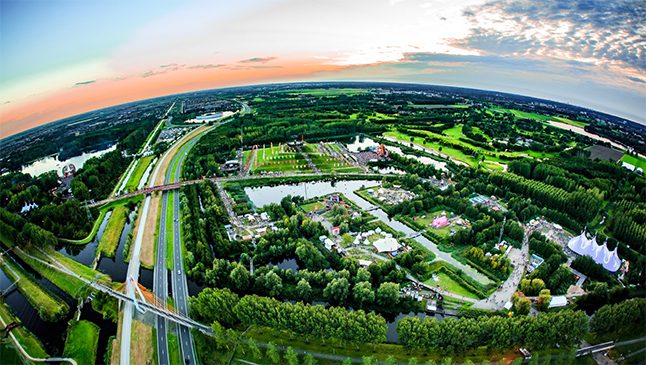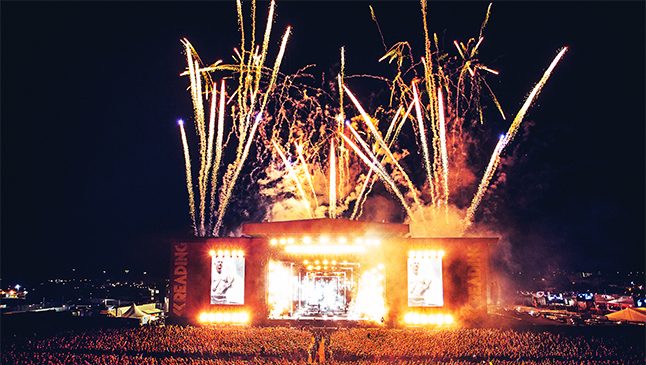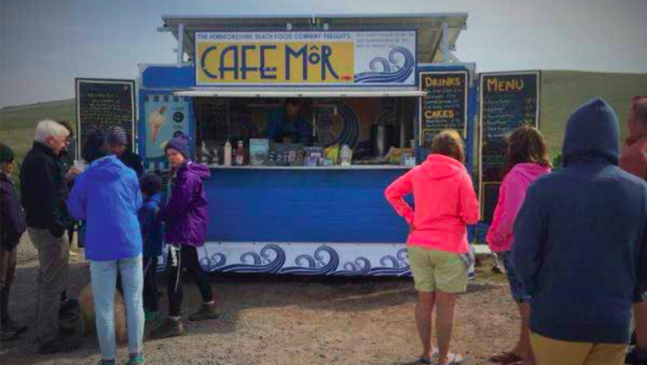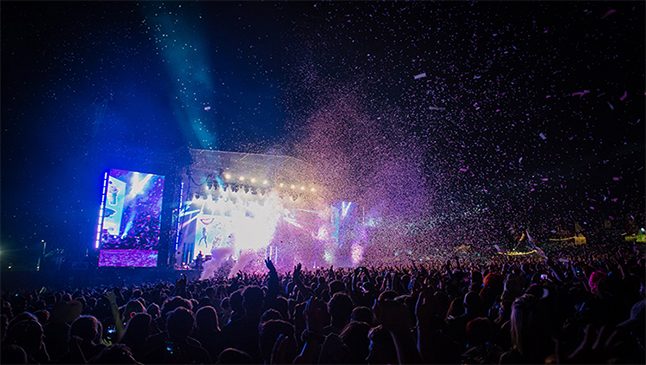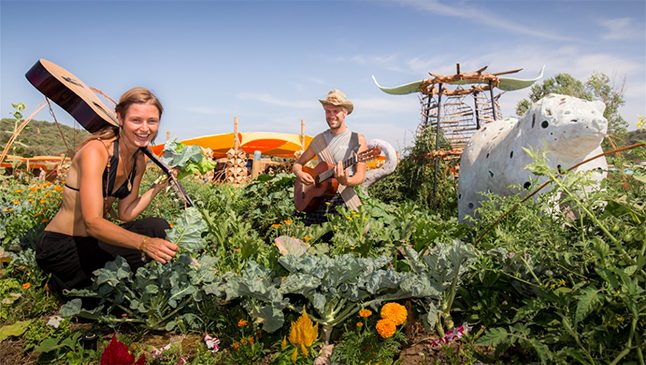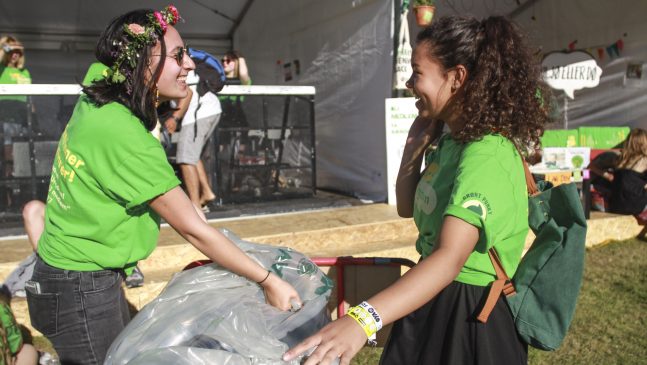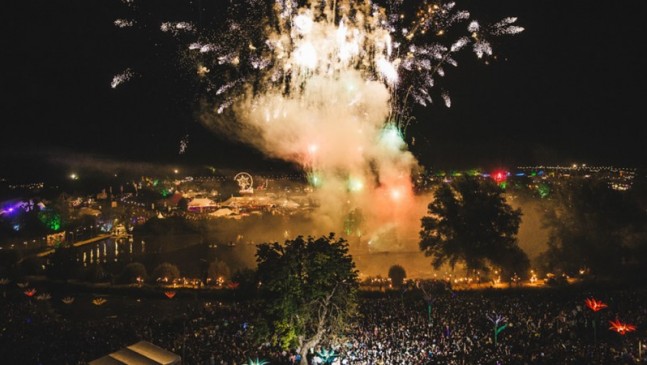How significant is the impact of changing traditional stage lighting for LEDs on fuel and equipment needed?
The impact of LED stage lighting on efficiency and fuel use can be huge – in the example below a saving of 70% was made. There are also other ways to reduce main stage fuel use, for example using smaller gensets or hybrid units to manage low loads overnight.
In this example scenario PAR lights, with a conventional lamp of 650 W, are changed for an LED light of 36 W saving 614 W per light.
Let’s say that during a 10hr show the total time the PAR light is actually used is approx. 2hr. If in a stage 50 PARs are used, the energy savings will be 614 x 50 x 2 = 61,4 kWh. As a result of the change, the total power demand of the stage will be reduced by 30.7 kW.
If in this example the original maximum power demand of the total stage was 80 kW, a generator of minimum 100 kVA would have had to be used. The average load on the generator would be approx. 20 kW. This load on a 100-kVA diesel generator leads to an efficiency of approx. 18%. Per show day, the fuel consumption of a generator in this situation will be approx. 110 litre diesel.
After replacing the conventional lamps with LED lights, the maximum power demand of the total stage will be 50 kW. A generator of minimum 60 kVA will be needed. The average load on this generator then will be approx. 14 kW. This load on a 60-kVA diesel generator leads to an efficiency of approx. 23%. Per show day, the fuel consumption of this generator in this situation will be approx. 32 litres diesel.
So changing the conventional 650 W PAR lights into 36 W LED PAR lights would save 70% of fuel consumption and therefore 70% of the stage’s CO2 emissions.
This huge effect is not only because of lower power consumption by the lights itself, but also because of a reduction of the peak demand. Because a smaller generator can then be used, the average load on this generator is relatively higher and thus the efficiency of the generator is also higher. It is worth noting that designing out large demand peaks in power systems is desirable, enabling smaller generators and fuel savings, but in the case of stages, it is acknowledged that there will be peaks due to the quality of the show.

